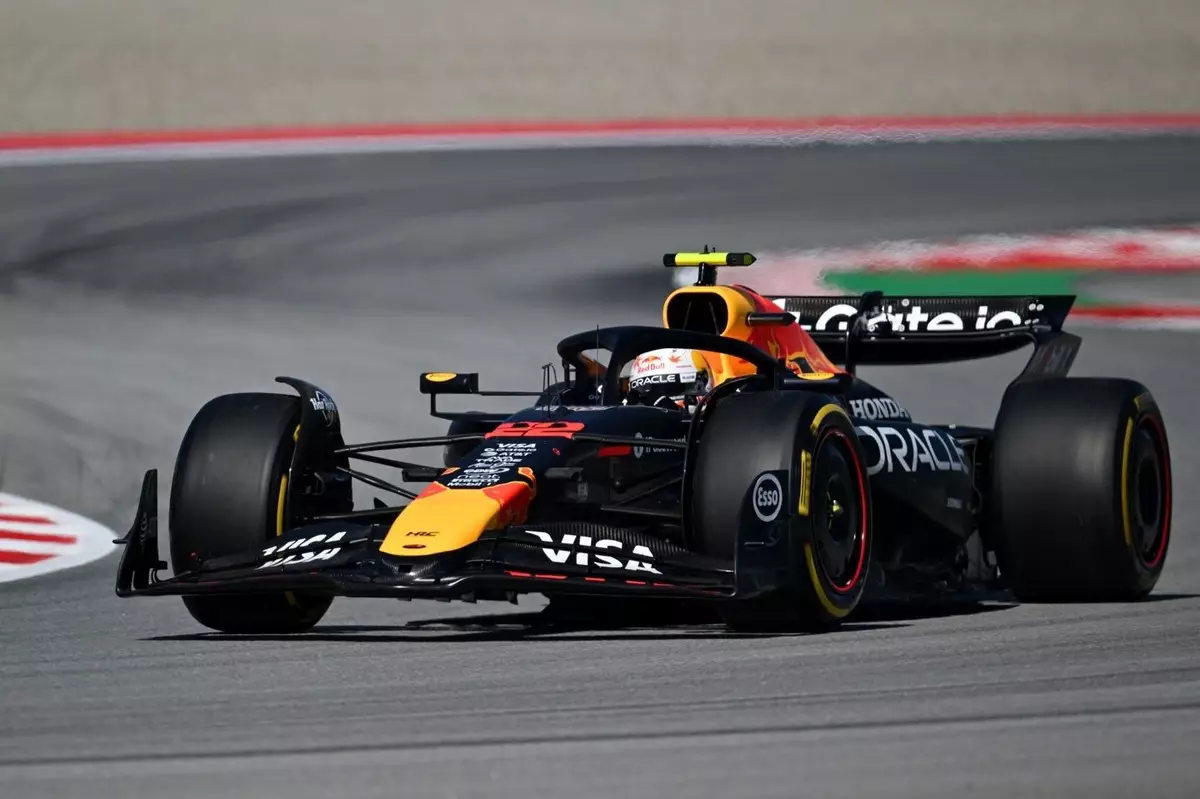As the Spanish Grand Prix weekend kicked off with the usual fervor, Yuki Tsunoda found himself grappling with an unfamiliar sensation of uncertainty regarding his performance on the track. The Red Bull driver, recognized for his tenacity and skill, openly expressed his bewilderment at what he described as a marked absence of competitive pace in the opening practice sessions. Tsunoda’s candid admission—“I don’t have any idea why I’m slow”—highlights the perplexities athletes often face even at the pinnacle of motorsport.
In the high-stakes world of Formula 1, where milliseconds can dictate fortunes, Tsunoda’s situation resonates with many racing enthusiasts. Despite the sessions being free of technical difficulties, he could not reconcile the dissonance between expectations and reality. This scenario underscores a fundamental struggle prevalent in sports: the mental and technical components of performance do not always align seamlessly, which can lead to significant frustration.
A Closer Look at Performance Discrepancies
Analyzing the performance data reveals stark contrasts, particularly when compared to teammate Max Verstappen, whose lap times efficiently melded with the expectations set upon the Red Bull Racing team. Tsunoda’s output lagged by an alarming six tenths during their soft-tyre qualifiers, igniting conversations about underlying issues that may not surface in typical technical analyses. His struggles were particularly evident in tricky sections of the track, such as Turns 9 and 10, where GPS data indicated a substantial deficit in speed relative to his renowned teammate.
Tsunoda’s comments on experiencing excessive sliding at both ends of the car hint at a broader imbalance that could stem from various sources, including tire degradation and aerodynamics. While he acknowledged some progress from the first to the second practice session, his insistence on a lack of identifiable problems suggests that sometimes, the science of racing becomes inscrutable. In moments like these, drivers often yearn for clarity, a solution to unlock potential that is often just beyond their reach.
The Mental Strain of Racing
Beyond the technical layer lies the psychological challenge that Tsunoda faces, which can significantly impact a driver’s overall performance. The burden of uncertainty can often be paralyzing, creating a cycle of self-doubt that can spiral out of control. As he prepared for a “longer night than usual,” the mental strain was palpable. The inherent pressure to perform—especially when one is unsure of the reasons behind a dip in competence—can create a sense of urgency that is rarely beneficial.
Verstappen’s perspective offered a counter-narrative; while he, too, was not entirely satisfied with his car, he managed to maintain a sense of positivity in his reflections on the day’s practice. His acknowledgment of a better feeling in the car despite not being fully at ease speaks volumes about his experience and mental resilience. This juxtaposition illuminates a critical aspect of racing psychology—the fine line between confidence and complacency. While Verstappen trusts his ability to adapt and improve, Tsunoda must cultivate similar confidence amidst his swirling doubts.
A Path Forward
The synthesis of engineering and driver skill means that finding the necessary adjustments can often be as much an internal journey as it is a mechanical task. For Tsunoda and his team, the focus should not solely remain on immediate results but also encompass the process of understanding and improving the car’s balance and dynamics. Engaging in thorough debriefing sessions and utilizing data analytics can provide the roadmap for rectifying issues identified during practice. This collaborative effort is paramount for accelerating Tsunoda’s quest for clarity and speed.
As the Formula 1 circus moves from practice to the race day, the narrative of discovery and introspection takes precedence. Tsunoda’s admission serves as a stark reminder of the complexities inherent in racing, reminding fans and drivers alike that speed and confidence often hinge on a delicate interplay between technology, psychology, and resilience. For those who dare to challenge the limits, such narratives offer a compelling glimpse into the relentless pursuit of excellence on the circuit.


Leave a Reply